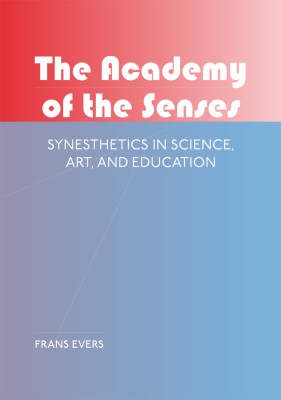Steina: Machine Vision (1978–)
Filed under video | Tags: · art, environment, installation, installation art, kinetic art, media art, op art, video, video art, vision
An electro-opto-mechanical environment by Steina, with instrumentation by Josef Krames, Woody Vasulka, and Bruce Hamilton. First shown at the Vasulkas exhibition at Albright-Knox Art Gallery in Buffalo, NY, 1978.
“When a human being operates the camera, the assumption is that the camera is an extension of the eye. You move the camera the way you move the head and the body. In video, unlike photography or film, the viewfinder is not necessarily an integral part of the camera apparatus. … In the late 1970s, I began a series of environments titled Machine Vision and Allvision, with a mirrored sphere. Another variation has a motorized moving mirror in front of the camera so that depending on the horizontal or vertical positioning of the mirror, the video monitor displays a continuous pan or tilt either back/forth or up/down. A third variation is a continuous rotation through a turning prism, while still another has a zoom lens in continuing motion, in/out. These automatic motions simulate all possible camera movements freeing the human eye from being the central point of the universe.” (Steina)
Recorded at the Palazzo delle Esposizioni, Rome, 1994/1995
Artist statement and documentation (artist’s website archive with restored videos)
WEBM (42 MB)
Comment (0)Vasulka Kitchen Cooking Reader (2020) [Czech]
Filed under book | Tags: · archive, art history, conservation, digital art, media, media art, media theory, new media art, preservation, technology, video, video art

“This collection of texts is being published either relatively early, or perhaps a bit late: about one year after the colloquium Art Works from the Digital Era in Galleries and Museums. Since then, unexpected events have altered our course, reframing our thinking about the overlap between art, time, entropy, duration and disappearance, and perhaps adding a greater sense of urgency than it had one year ago.
The colloquium was organized to celebrate the the first anniversary of the opening of the Vašulka Kitchen Brno: Center for New Media. The organizers discussed topics with colleagues from the Brno House of Arts and the National Film Archive in Prague, hoping to promote thinking about the state and fate of art works of an “unstable“ nature, especially within the context of Czech collections, galleries, and museums. The objective was to establish contact, and to potentially cooperate with similar initiatives in Central Europe. During the two‑day meeting, the contributions mostly touched on the orientation of artistic and expert initiatives and institutions which were already focused on this issue, or were planning to turn their attention to it. In addition to contributions from Czechia, Vasulka Kitchen also welcomed contributors from the Netherlands, Germany, France, Norway, Slovakia, Hungary, Poland and the United States, who shared their experiences of and opinions on the topic.
This publication is dedicated to the memory of Woody Bohuslav Vašulka.”
With English introduction and abstracts.
With contributions by Flóra Barkóczi, Dušan Barok, Martin Blažíček, Vannevar Bush, Lenka Dolanová, Kateřina Drajsajtlová, Jakub Frank, Joey Heinen, Jana Horáková, Erkki Huhtamo, Vít Janeček, Michal Klodner, Barbora Kundračíková, Štěpán Miklánek, Gustav Metzger, Anna Olszewska, Kryštof Pešek, Miklós Peternák, Pavel Sikora, Matěj Strnad, Barbora Šedivá, Miloš Vojtěchovský, Peter Weibel, Gaby Wijers, and Gene Youngblood.
Edited and with an Introduction by Miloš Vojtěchovský
Publisher Vašulka Kitchen Brno, Brno, October 2020
Creative Commons BY-NC-SA 4.0 License
ISBN 9788090776333
253 pages
Review: Lukáš Pilka (Flash Art CZ/SK, 2021, CZ).
Book presentation (video, 13 min, Czech)
Colloquium
Publisher
PDF (77 MB, updated on 2020-11-28)
Wiki (added on 2023-6-7)
Frans Evers: The Academy of the Senses: Synesthetics in Science, Art, and Education (2012)
Filed under book | Tags: · art and science, art education, art history, education, electronic music, media art, remediation, science, sound, synaesthesia, theatre

“Frans Evers’s The Academy of the Senses is a book wanting to be three books at once. A study of the scientific approaches to synesthesia, related to the psycho-physical research conducted by Evers during his studies at the university; an alternative art history of the twentieth century based on the double paradigm of Castel’s clavecin oculaire and Wagner’s Gesamtkunstwerk; and a full account of the genesis of the Interfaculty Image & Sound. To encompass this entire range of subject, Evers coined a new term, “synesthetics,” to denote the experience, creative force, and study of synesthesia.
Throughout his career, Evers profiled himself as an educational reformer. Together with electronic music pioneer Dick Raaijmakers, he started a series of projects and lectures exploring the interaction of music and fine arts, which culminated in the establishment of the first multimedia department in the Netherlands, the Interfaculty Image & Sound at the University of the Arts in The Hague, which Evers headed from 1989 until 2007. This book maps out the theoretical and artistic foundations of this educational reform project, as well as its synesthetic output: large multi-media performances such as a reworking of Anton Schoenberg’s Die Glückliche Hand, Mondrian’s Promenoir, and Scheuer im Haag.
The Academy of the Senses is a “source book,” a work of inspiration, rather than a rigid account of historical facts. It provides anyone with an interest in the wondrous realm of multimedia arts and synesthesia as a creative force, whether student or professional, an introduction into the foundations and extensions of seeing sound and hearing colors throughout the centuries.”
Compiled and edited by Vincent W.J. van Gerven Oei
Publisher ArtScience Interfaculty Press, University of the Arts, The Hague, 2012
ISBN 9789461908193, 9461908199
298 pages
via editor
Review: Matteo Marangoni (Neural, 2013).
PDF (19 MB)
Comment (0)
